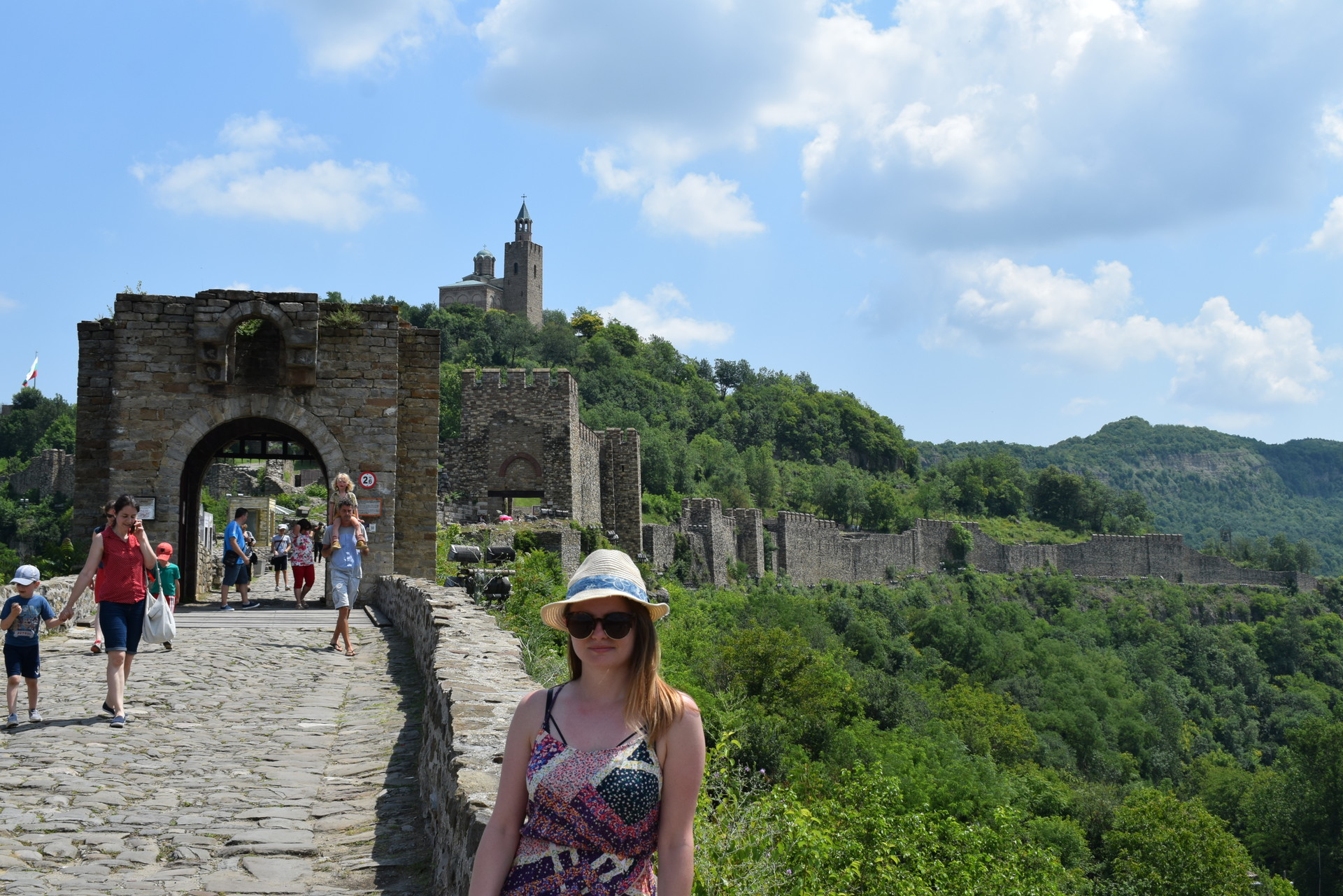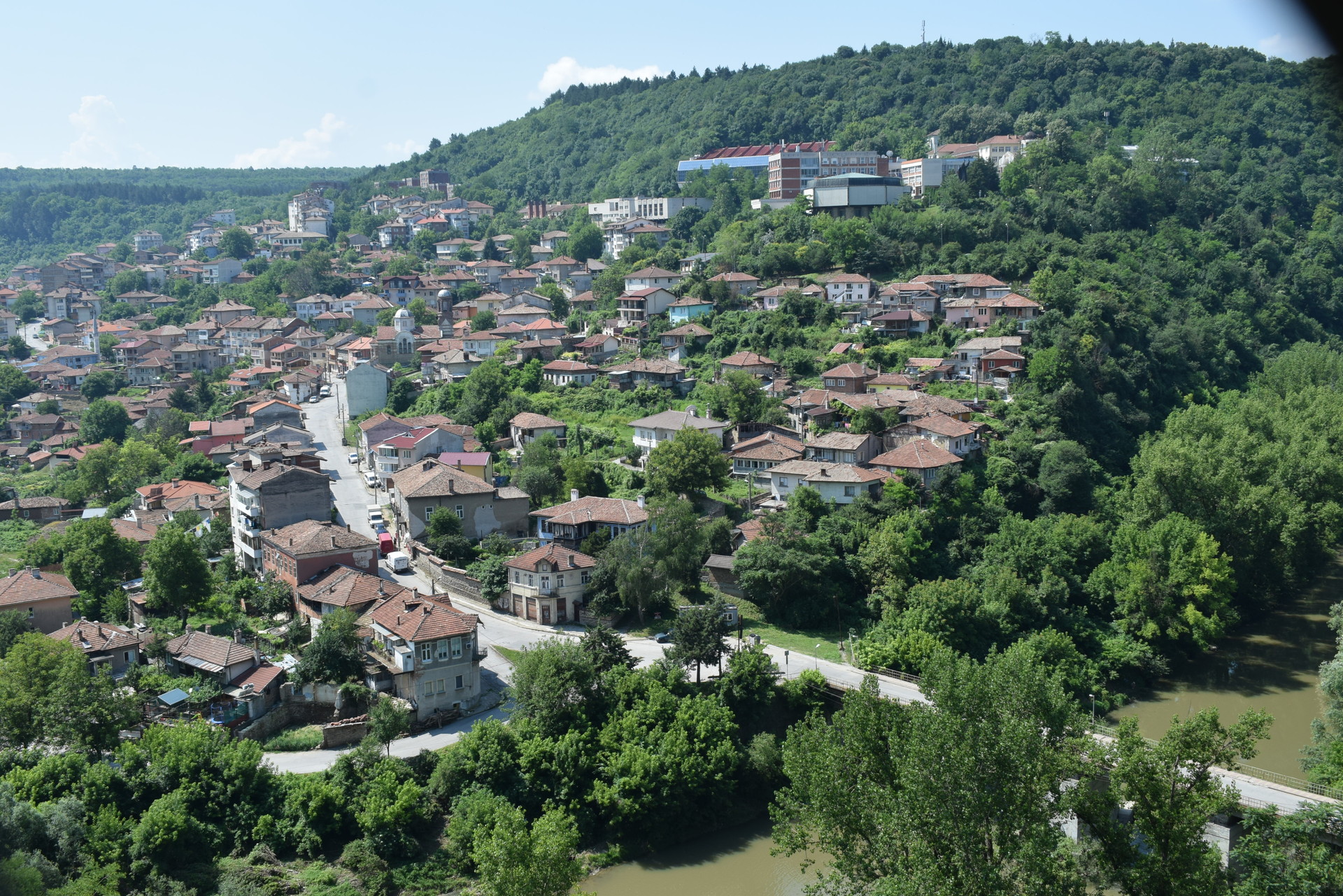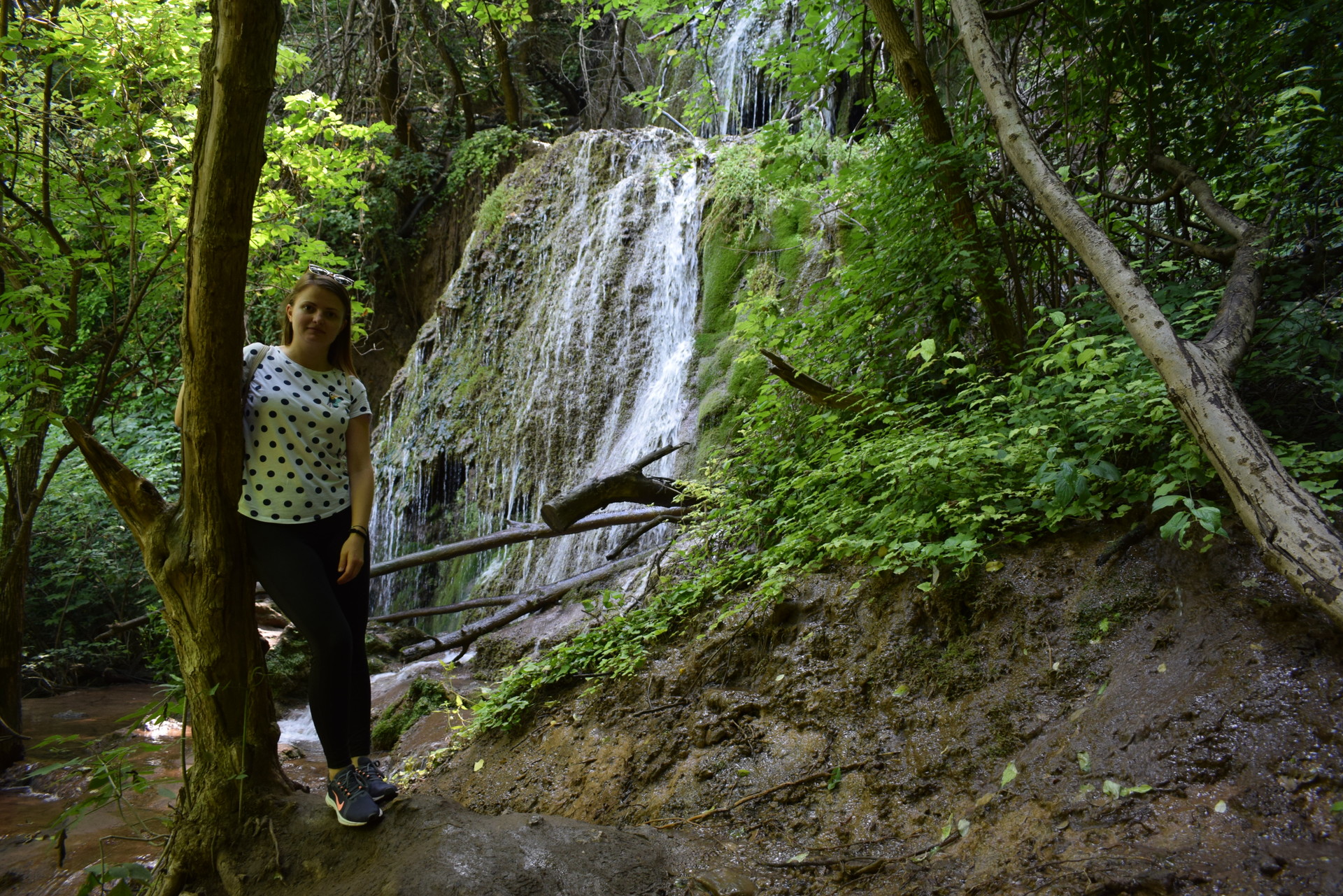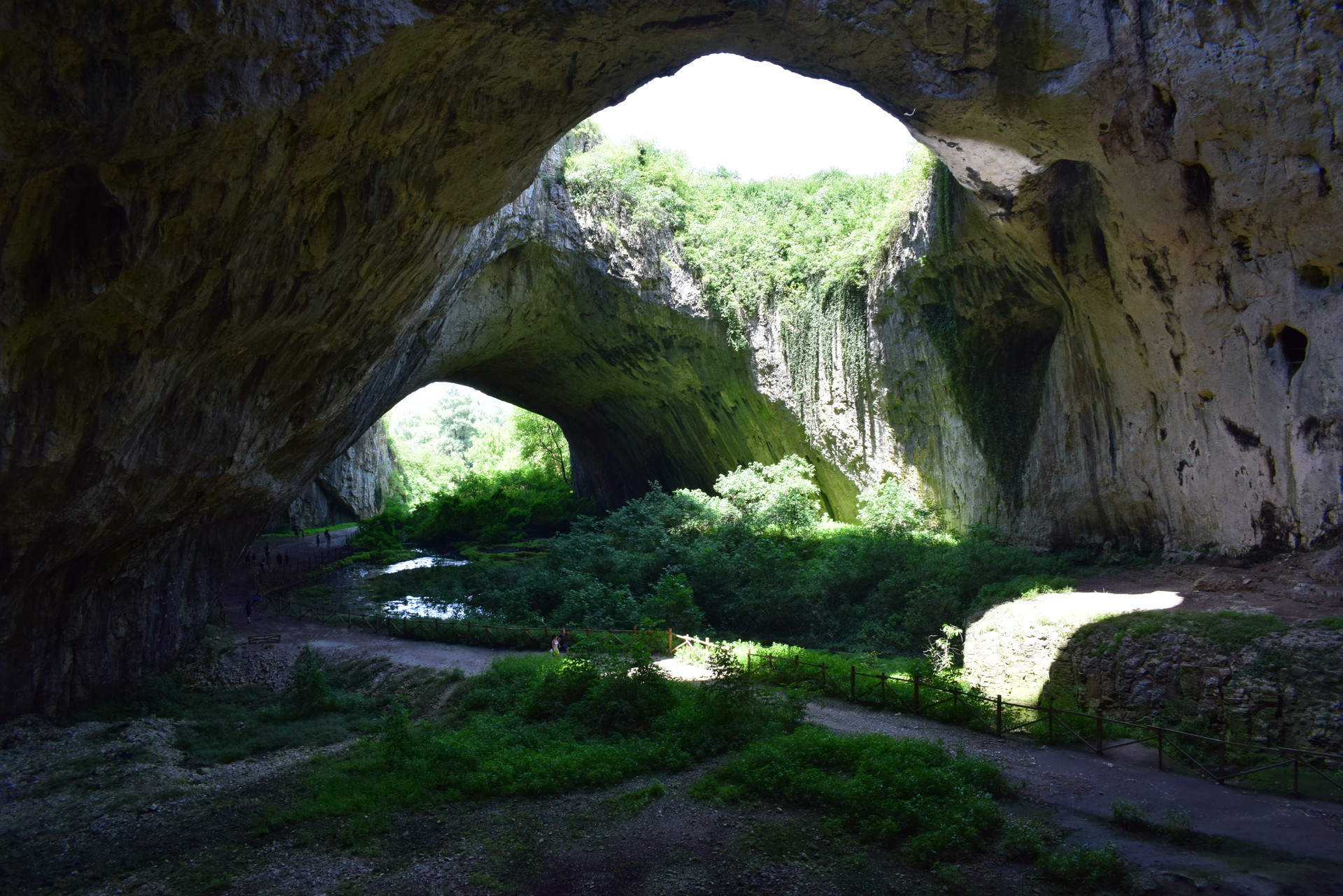A weekend trip in North Central Bulgaria
In the city of Veliko Tarnovo is one of the oldest settlements on our lands were found and the oldest excavations show that there were settlers on these lands three thousand years ago. Thus, the city of Veliko Tarnovo is for sure one of the oldest cities around. Then, when the Greeks, Romans, Thracians, Slavic people and Bulgarians were living on these lands the settlements started growing. Around the tenth century, the fortress of Veliko Tarnovo was built, which only confirmed the power of the Bulgarian Kingdom back in the days. The fortress had the sole purpose to protect the city and also the royal family that was living in the castle. However, a couple of centuries later, after the many battles fought, the Bulgarian Kingdom was besieged by the Ottoman Empire and remained under its control for the next five centuries. Eventually, the city was freed and in some areas rebuilt so that people can return back to their homeland.
When I was a little kid my family used to always visit the old capital city of Bulgaria, Veliko Tarnovo. It was for sure one of my favourite cities in Bulgaria and especially since I was little I considered it to be a huge city. Until this very day, Veliko Tarnovo is one of my favourites and it offers lots of sights for visiting around the city, as well as lots of parks and nice traditional restaurants that will offer you the best cuisine ever. In addition to that, the city is full of narrow little streets full it well-preserved Bulgarian houses from the past. There are even small shops that are considered to be the oldest shops in the country, so you can imagine how the old tradition was kept.
That is why I decided to visit the old capital city of Bulgaria once again and explore its historical landmarks and unique traditions. I divided my weekend trip in two days, the first day I visited the city of Veliko Tarnovo and on the second day, I visited the city of Krushuna, where the famous Krushuna waterfalls were and the Devetashka Cave.
How to get to Veliko Tarnovo?
The easiest and fastest ways to get to Veliko Tarnovo is by car. However, if you are going by car make sure that you buy the Vinetka, which is the toll tax in Bulgaria. The toll tax for a week costs 15 leva, which is around 8 euros. The ride to Veliko Tarnovo takes around 3 hours each way, thus you have to be quite prepared.
Another way to get to Veliko Tarnovo is by bus, which is also a quite fast and convenient way. You can catch the bus from the central bus station in Sofia and a ticket there would usually cost around twenty leva or 10 euros.
Where and what to eat in Veliko Tarnovo?
There are many restaurants in Veliko Tarnovo, but I will share two of my favourite there. One of them is Shtastliveca (The Lucky Man), which is a very nice restaurant that offers fine meal options. In most of the cases, it offers seasonal meals, but there are also many traditional Bulgarian meals from which you can choose. In addition to that, there is an amazing view of the river Yantra and part of the old town of Veliko Tarnovo.
The other food option I would suggest is the Ego Pizza, which offers one of the tastiest pizzas in the city. However, there you can also find excellent traditional Bulgarian dishes and many other food options to satisfy your hunger after a long walk around the fortress.
Day one: The archaeological complex of Tsarevets
Once I reached Veliko Tarnovo, I went to the ticket office that is on the left side of the road, right before the fortress. There I bought a ticket for students, which cost me two leva or one euro. However, the regular ticket to the fortress is six leva or three euro, thus it is quite cheap.
Then, I continued to the archaeological complex where I had to give my ticket to the people that were checking them and then I entered. The fortress was as huge as I remember it since I was a little kid. It has not changed a lot and still had those thick tall walls around the cliffs and hills surrounding it. At the beginning of the fortress, there are two huge statues of lions that were the symbols of the Bulgarian royal family back in the days. The lions were suggesting how powerful and wealthy the royal family was.

Going further into the fortress I stumbled upon the first two gates that were leading me inside of the enclosed medieval city of Tarnovo. Both of them were quite huge, made out of rock and their doors were heavy and made out of metal and engraved on each sides. The gates were mainly used as the entrance to the city but were also protecting the city from its attackers. After the gates, there were the ruins of the houses of the aristocrats and villagers living in the fortress that were also helping the royal family.
Then, I continued to the right where there were more ruins of the houses of the people that were living in the fortress, as well as the towers that were housing the archers. This path led me to Baldwin's Tower, which is one of the most famous towers in the fortress. The legend says that after the Bulgarian King Kaloyan defeated the Latin Emperor Baldwin I of Constantinople at the battle of Adrianople he imprisoned him in that tower and kept him there for many years, until his death. It was possible for me to go up Baldwin’s tower and also go inside of it, where I could see all the different rooms that were inhabited centuries ago. From the tower of Baldwin, I could also overlook the beautiful river Yantra, that was flowing through the city of Tarnovo.
After that, I went back at the same path again, so I could reach the stairs for the Ascension Cathedral, which was one of the well-preserved buildings of the archaeological complex. However, it is quite hard to climb up to it, especially on a hot sunny day and I would advise you to get plenty of water with yourself. Eventually, I climbed up to the Ascension Cathedral, which was the highest point of the fortress and was built so high, so that the people can be closer to God. The cathedral has one of the grimmest and scariest medieval frescoes I have ever seen from the Medieval period it was built in. Those frescoes are representing the rise and the fall of the Second Bulgarian Kingdom and this is the reason for their sort of scary look. From the highest point of the fortress of Tsarevets, I had the chance to oversee the whole city from every side, which made the view even more fascinating. I could even see that the walls of the fortress were spreading even on the other side of the river, which was only proving that this was one of the biggest fortresses back in the Medieval times.

Just below the Ascension Cathedral, there were many ruins that were part of the palace complex. Most of them included almost 500 residential buildings, a couple of temples, monasteries and an inn. After these remains from the tenth century, I continued to the Skull rock, which was a place that I have never explored before when I was coming here. The Skull rock was quite famous, as there are many stories about Christian people that were seeking salvation from the rulers of the country back then. Furthermore, there are also many stories and artefacts proving that the Skull rock was used for throwing the traitors of the country from there, as a punishment during the Medieval ages. However, later the people built a monastery there, which was be seen from the remains left of it there with a small altar.
Finally, I ended my trip around the archaeological complex of Tsarevets filled with joy and excitement. It was quite a very interesting experience that I would recommend to everyone that visits the northcentral region of Bulgaria.
Day two
On day two I decided to visit more natural landmarks in the northern part of Bulgaria. Thus, I divided my day between the Krushuna waterfalls and the Devetashka Cave.
Krushuna waterfalls
When I was staying in the region of Veliko Tarnovo I decided to also visit the Krushuna waterfalls as part of my trip in central northern Bulgaria. It was a very nice and refreshing walk up to the waterfalls and a truly magical experience. However, I would advise you to take plenty of water with you and a repellent to put on your skin, so that the mosquitos avoid you there.

I started my trip early in the morning when I arrived in the city of Krushuna where the waterfalls were. There I had to pay around two euros to enter and then my journey up the waterfalls began. I had to climb a lot, so I could reach the famous cave from which the Maara river springs. The cave was quite low so it was not quite possible to go inside, but it was also interesting to look it from the outside. Going further there was a meadow that was later leading me to one of the first waterfalls. However, the path to the first waterfalls was closed, as some of the limestones fell a couple of years ago and this area was considered a dangerous one.
Anyway, I continued to the most famous part of the Krushuna waterfalls, which was the bridge with the waterfalls. The view there was absolutely mesmerizing and it was mainly due to the turquoise water of the waterfalls and their ponds. Going further down the path I found a couple of more waterfalls along the way that were as well quite astonishing. Eventually, I ended up at the beginning of the trail where I decided to take some break from the tough climb up to the waterfalls.
Devetashka Cave
After the Krushina waterfalls, I went by to the Devetashka Cave, which was only a short distance from the Krushuna city. The cave is one of the most prominent open karst caves in Bulgaria and it became even more famous when the movie of the Expendables was filmed there.

To get to the cave I had to walk a bit and cross a bridge, which led me exactly in front of the cave. Honestly, this was one of the biggest caves I have ever seen. The cave was fully open, there was grass everywhere along with little ponds and on its ceiling, there were two huge holes that to me looked more like eyes. It was quite spacious and at its end, there were a couple of rooms that were not open for the visitors, as one of them was the “bat” room, where the animals were sleeping. An interesting fact is that there are many creatures that inhabit the cave and there are fifteen species of bats that can be found there. Along with that, there were many brawls that were flying around and had nest all around the cave with little chicks. An interesting fact about the cave is that it was inhabited by humans back in the Paleolithic period and was used as a shelter.
Photo gallery
Content available in other languages
Want to have your own Erasmus blog?
If you are experiencing living abroad, you're an avid traveller or want to promote the city where you live... create your own blog and share your adventures!
I want to create my Erasmus blog! →



















Comments (0 comments)